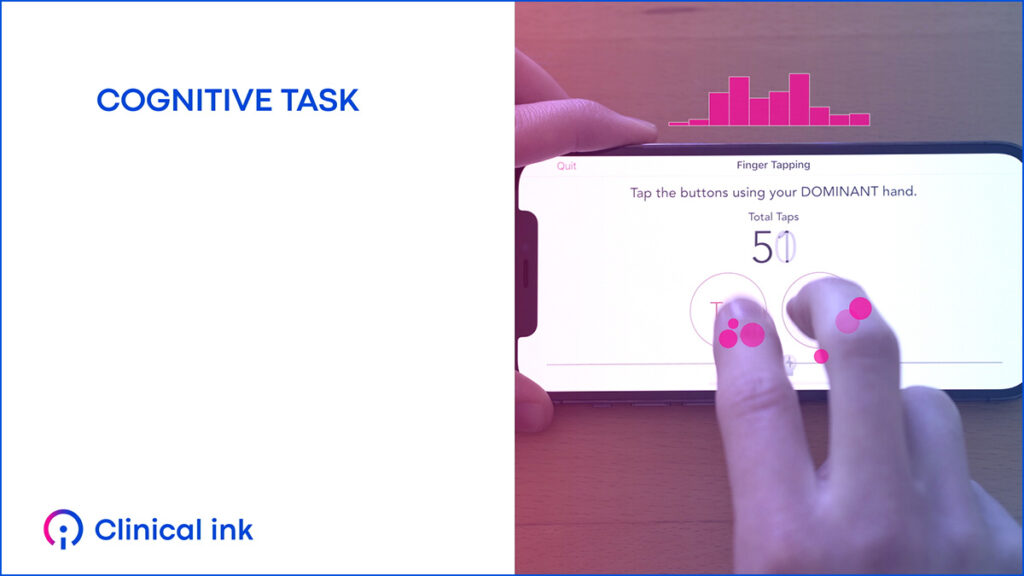Measure Visuomotor Coordination and Motor Performance
The Clinical ink Mobile Finger Tapping Test measures a patient’s ability to rapidly generate and coordinate rhythmic motor movements.
Participants place their index and middle fingers on the circles and rapidly tap them in alternating order. Taps completed correctly add to the “Total Taps” counter during a dominant hand and non-dominant hand test. Performing coordinated movements requires sufficient motor control to make them consistent and repeatable.
Why Measure Finger Tapping?
Finger Tapping is sensitive to changes in visuomotor coordination and motor performance. Diseases affecting brain regions involved in the ability to generate coordinated motor movements can negatively affect Finger Tapping performance. For example, altered Finger Tapping performance has been demonstrated in Parkinson’s disease, schizophrenia, and alcoholism.1-3 Using Finger Tapping measurements, disease- and treatment-related changes in visuomotor coordination and motor performance can be estimated.
Learn About the Benefits of Clinical ink’s Technology
Learn more about how Clinical ink’s sensors and wearables technology powers the Mobile Finger Tapping Test, as well as other mobility, cognitive, and speech assessments, or download the Clinical ink Big Brain Book, a digital assessments and endpoints catalog.
Sources:
1. Tavares, ALT et al (2005). Quantitative measurements of alternating finger tapping in Parkinson’s disease correlate with UPDRS motor disability and reveal the improvement in fine motor control from medication and deep brain stimulation. Movement Disorders, 20, 1286-1298.
2. Carroll, CA et al (2009). Timing dysfunction in schizophrenia as measured by a repetitive finger tapping task. Brain and Cognition, 71, 345-353.
3. Parks, MH et al (2006). Brain fMRI activation associated with self-paced finger tapping in chronic alcohol-dependent patients. Alcoholism: Clinical and Experimental Research, 27, 704-711.
